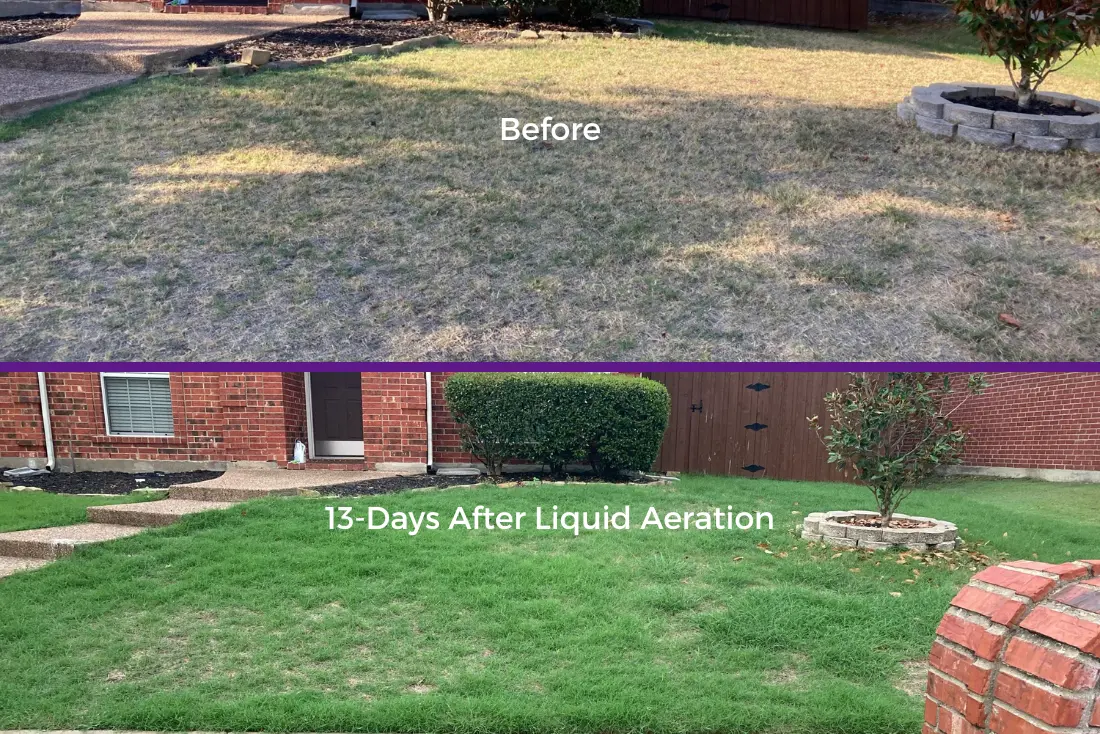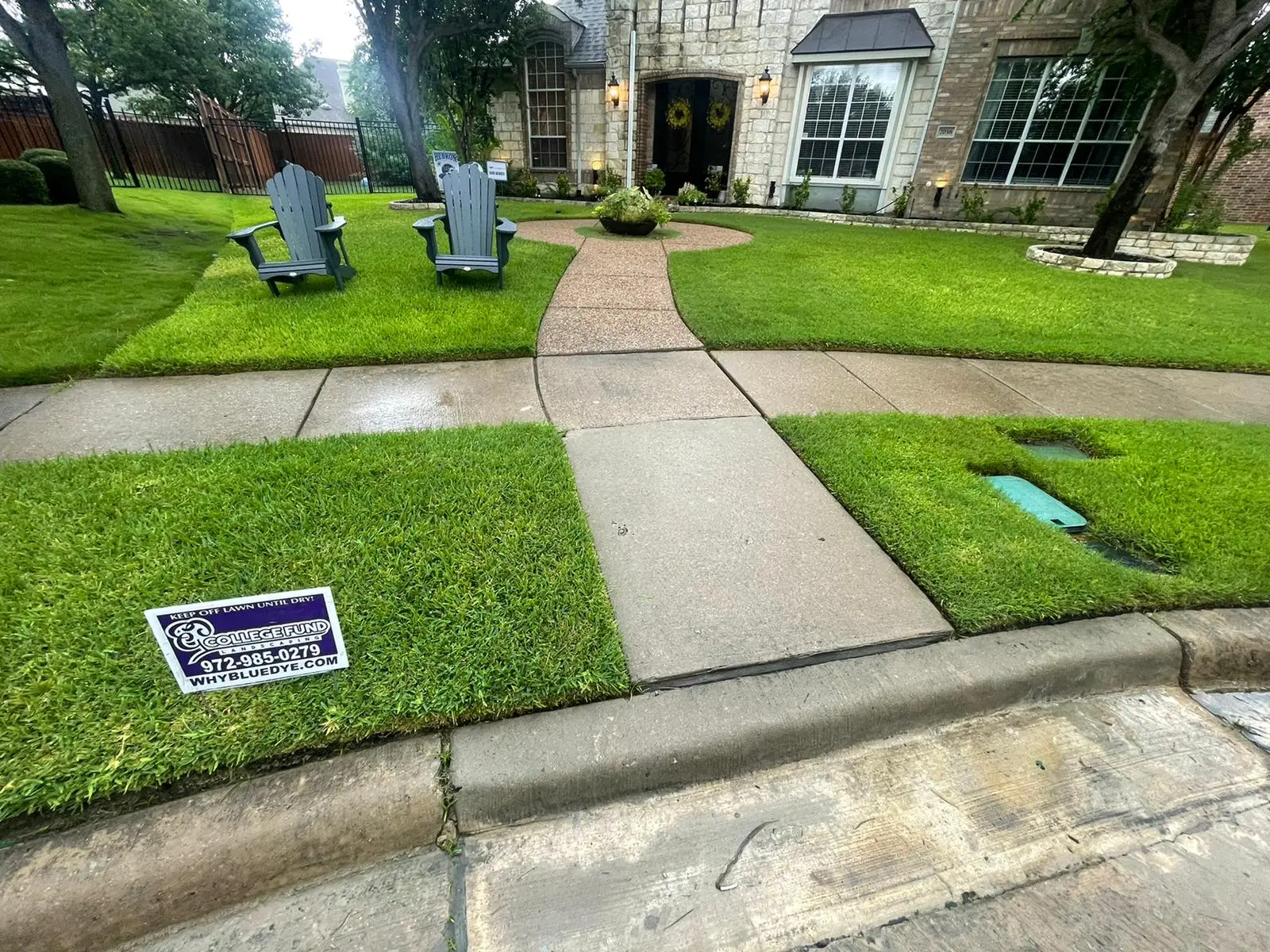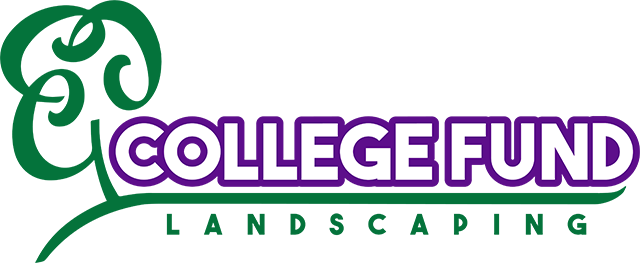In a world where DIY, money-saving hacks are all around us, it can be hard to determine where to draw the line. One factor that many new DIYers fail to take into consideration, is that time is measured in money. But even the best DIY bloggers out there will admit that some jobs need to be left in the hands of professionals. Soil aeration and dethatching are great examples of those types of jobs.
We previously wrote a blog on what liquid aeration is and how it’s applied. You can check it out here.
Now we want to answer a few more scientific FAQ’s that we’ve heard from you. With the help of the experts at Greene County Fertilizer Company, below we have broken down the science of this treatment in layman’s terms.

Liquid Aeration Frequently Asked Questions
What are the key components of a liquid aeration treatment?
Humic Acid is the key component of this breakthrough application. It is a part of the Humus group of substances, where Humus literally means “Soil Organic Matter”. It is a dark brown water-soluble substance that has a low pH.
When humic acid is combined with other ingredients and added to soil, it can accomplish specific goals related to maintaining and improving soil and plant health.
Specifically, let’s dive into two ways we look to improve our soil conditions: Dethatching and Aerating.
Dethatching
Thatch is a term in the lawn care industry that describes a layer of organic matter that formulates between the herbaceous part of the plant and the roots that live below the soil layer. While this layer can be beneficial in moderation, more times it is found at the point where it has built up too much, discouraging oxygen penetration into the soil. At this point, the thatch layer needs to be reduced or removed through a process known as dethatching.
Liquid dethatching techniques are becoming more and more popular due to them being less labor-intensive. The liquid solution is a combination of humic acid with carbohydrate-rich molasses. This allows not only for the breakdown of the thatch layer but also the introduction of more necessary nutrients back into the soil in a format that does not impede oxygen penetration.
When thatch layers are appropriately maintained, grass grows thicker, which provides less surface area for thatch to collect in future years.
Aeration
Aeration is a process with a very specific goal: to introduce more oxygen into the soil.
During mechanical aeration practices, this is done using a large, heavy machine that punctures holes in a pattern throughout the soil. The machine can be very trying to operate, hard to get into small spaces, and damaging to certain things such as underground wires and irrigation heads.
Different from mechanical, liquid aeration is accomplished by introducing a humic acid solution on top of the soil to break down and loosen compacted soil particles. The humic acid solution is mixed with water and then applied evenly across the affected area of turf. As the liquid gets to work on the compacted soil, small channels are created which allow water, oxygen, and nutrients to permeate hard-to-reach areas.
The specific solution varies from the dethatcher.
When should I plan to liquid aerate and how many times per year?
Liquid Aerate is recommended to be applied twice during the calendar year. The first application should be done in combination with your spring fertilizer, many times referred to as ‘your first fertilizer app ’. At College Fund Landscaping, this fall under round 3 or your first two rounds of pre-emergence. This will allow for oxygen to get to the roots of dormant grass quicker and make it turn green sooner.
The second application is done in the fall. As stated above, the potassium allows for the soil to separate, creating ideal conditions to penetrate the soil layer.
Applications need to repeat annually for the best results. The humic acid opens the soil during the application, but a single application will not continuously open the soil for years to come.
How long do the Liquid Aeration and Dethatch treatments need to be on the lawn before watering?
This treatment LOVES to be watered in. After you water it in or get a nice rain from mother nature, you will begin to see results within about 48 hours.
During the first round of the year, you’ll notice the lawn starting to green up.
Overall, we encourage you to water in the treatment right away. If we get a big storm, don’t fret, the application should still work fine.
How long before I will see the actual results of the Liquid Aeration and Dethatch treatment?
Applications done in the spring will show results via the foliage color greening within the first 48 hours.

Can Liquid Aeration and Dethatch treatment be added to the flower beds/shrub beds?
Liquid aeration treatments can in fact be applied to mulch beds. We recommend doing a root drench in areas where you have colorful annuals, shrubs, or perennials because it can stain flower petals. It will provide a diluted, yet targeted control approach directly to the base of the plants.
You do not need to apply the aeration treatment to these areas.
Are the treatments safe for pets and family members?
Liquid aeration and dethatching are both safe for pets and family members without a drying period due to the solutions being made from organic matter.
Is liquid aeration safe for new sod?
This application is not only safe for new sod but highly recommended. It has actually been referred to as the “cheapest sod insurance you can buy”. When used in combination with fertilizer, the liquid aeration promotes and allows for easier, quicker root attachment of the sod into the existing soil.
As always, don’t forget to water!
How do I get started on a liquid aeration treatment plan?
Our professional fertilization process is a great place to start. We examine your property thoroughly in order to disperse the correct fertilizer for your type of grass, in the right amount, at intervals that will be most effective.In addition to this program, all customers have access to our GADA program, which includes two liquid aeration treatments. For a free quote, call our office at 972-985-0279 or visit our website and click “Get a Quote”


Comments (0)
Thanks for your comment!
Thanks for your feedback! Your comments have been successfully submitted! Please note, all comments require admin approval prior to display.
Error submitting comment!
There is a problem with your comment, please see below and try again.